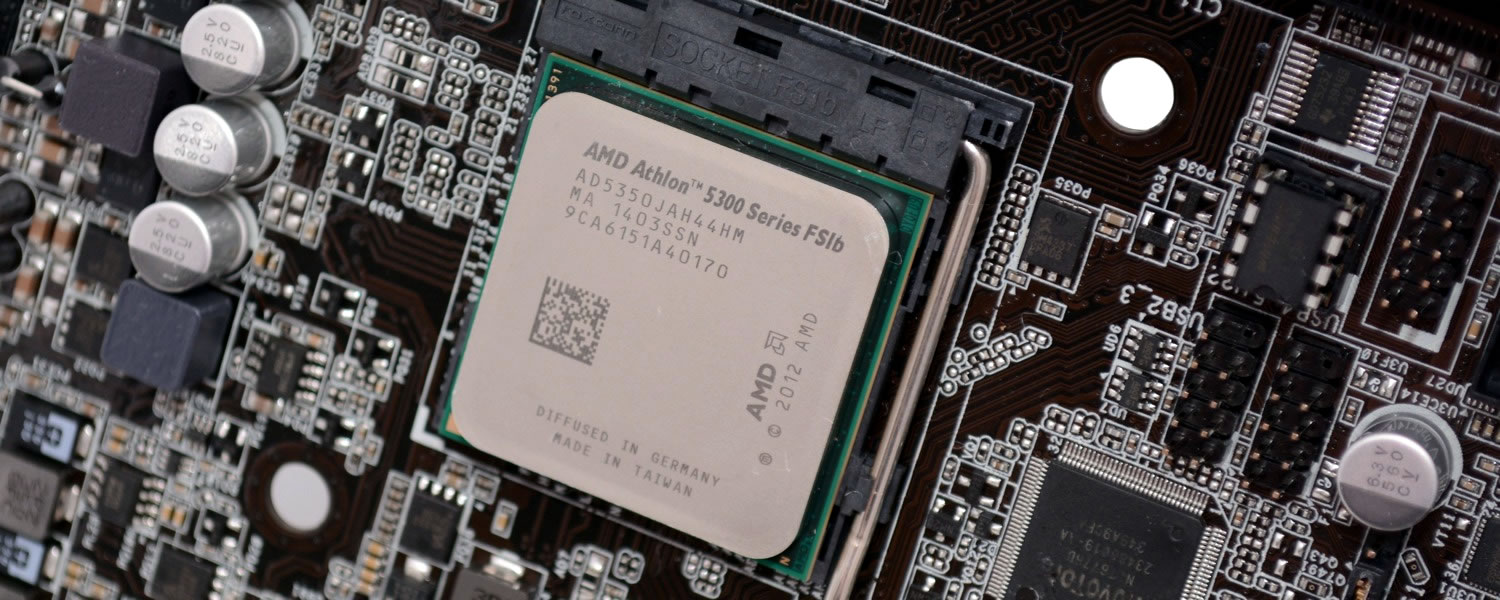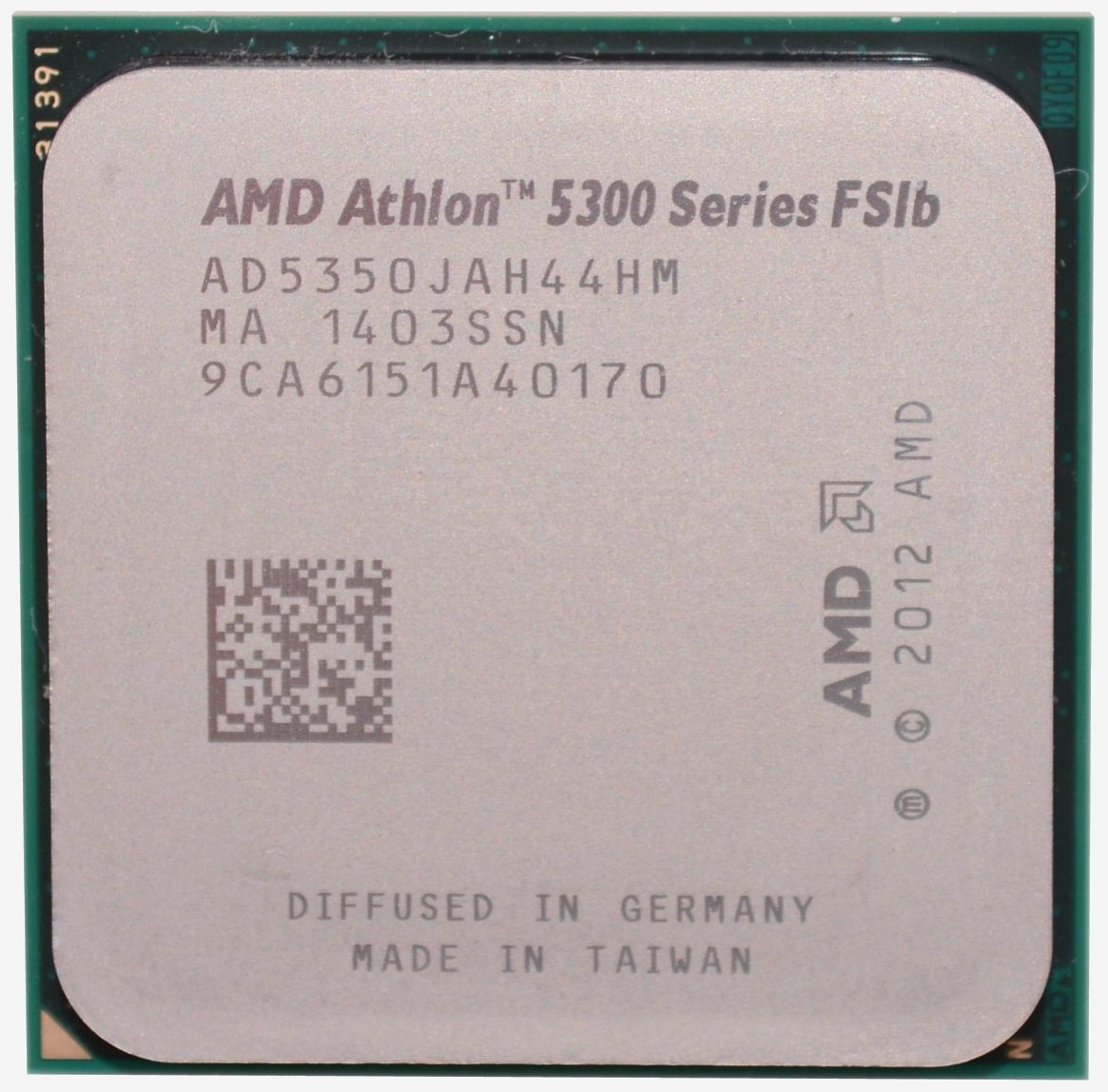AMD set its sights on desktops in emerging markets last month, announcing its AM1 platform and the first Kabini-based socket APUs. The Kabini architecture arrived last year for ultra-mobile and embedded devices, bringing 28nm chips with TDP ratings as low as 3.9w, though most parts were rated for 8 to 15w.
When they first landed, Kabini chips were BGA parts using the Socket FT3 and featured either two or four cores using the Jaguar microarchitecture. Unlike Kaveri desktop APUs which have a dual-channel DDR3 memory controller, Kabini parts are limited to a single-channel DDR3 controller that tops out at 1600MHz.
Low-end desktop SoCs typically come soldered to motherboards, including AMD's 2011 Brazos platform with the E-350 as well as Intel's Bay Trail-D architecture. Since upgradability is limited in that scenario anyway, many people see tablets and related options as being more practical considering their price and portability.
AMD hopes to change that with its AM1 platform, which currently offers four APUs as well as a range of affordable motherboards from Asrock, Asus, ECS, Gigabyte and MSI. This gives the platform an edge over previous budget SoCs as it provides entry-level buyers the flexibility enjoyed by the rest of the desktop market.

While checking out the new AM1 APUs, we included many potentially competing chips we had on hand and we picked up the the Intel Core i3-4130, Pentium G3220 and Celeron G1820. This should provide a clear picture of what is available in the low-end CPU market and help determine which solution is right for you.
AMD AM1: Desktop Kabini
The AM1 platform launched with four APUs, though we expect the number of options to grow as the platform matures. Below is a table highlighting the key features of these new APUs.
| Athlon 5350 | Athlon 5150 | Sempron 3850 | Sempron 2650 | |
| CPU Cores | 4 | 4 | 4 | 2 |
| CPU Frequency | 2.05GHz | 1.60GHz | 1.30GHz | 1.45GHz |
| GPU Cores | 128 | 128 | 128 | 128 |
| GPU Frequency | 600MHz | 600MHz | 450MHz | 400MHz |
| Memory Frequency | 1600MHz | 1600MHz | 1600MHz | 1333MHz |
| L2 Cache | 2MB | 2MB | 2MB | 1MB |
| TDP | 25w | 25w | 25w | 25w |
| MSRP ($) | $55 | $45 | $36 | $31 |
The Athlon and Sempron brands are back (sadly Duron hasn't returned).
The Athlon 5350 is at the top of the AM1 food chain with 4-cores, 2MB L2 cache and a 2.05GHz operating frequency. It also features the 128 SPU GPU which comes clocked at 600MHz. At a cost of just $55, the Athlon 5350 is today's most expensive AM1 APU.
At $45, the Athlon 5150 can be had for $10 less and is the same as the Athlon 5350 except in clock speed, which has been reduced to 1.60GHz.
The Sempron 3850 is even cheaper at just $36, and while it maintains all four cores they are clocked at just 1.30GHz. The GPU has also been clocked down to 450MHz and yet despite all that the same 25w TDP rating still applies.
Finally, the cheapest of the lot is a $31 dual-core version called the Sempron 2650, which is clocked at 1.45GHz with a 400MHz GPU clock speed and is limited to DDR3-1333 memory. The L2 cache has also been reduced to just 1MB while the 25w TDP rating still applies. When it comes to $31 processors, the Sempron 2650 is the beginning and the end.
Although the platform has been named AM1 the socket is actually called FS1b. At this stage there are no standard ATX motherboards, with most being based on the MicroATX form factor, and a few Mini-ITX boards we prefer.
The motherboards themselves are extremely simplistic given that the AM1 processors are SoCs with integrated memory, PCIe, USB, Gigabit Ethernet and SATA controllers. You get a single-channel 64-bit memory controller supporting DDR3/DDR3L memory, two USB 3.0 ports, eight USB 2.0 ports, PS/2 support, up to four eDP/DP/HDMI video outputs as well as a VGA output, four PCIe 2.0 lanes for a discrete GPU/PCIe device, two SATA 6Gb/s ports, and four PCIe 2.0 x1 lanes though one is dedicated to the Gigabit Ethernet controller.
With the most expensive AM1 APU costing just $55 we don't expect to see any crazy motherboard designs or feature sets. For the most part we suspect motherboard makers will leave the APU to deliver the bulk of the features.

The same goes for the CPU coolers as we suspect most systems will feature AMD's low profile stock cooler. The cooler uses a pushpin retention system that is a little fiddly and not nearly as elegant as the latch leaver system used on Intel's mainstream platforms. Given that AMD's cooler uses a small fan we hope to see some passively cooled solutions in the future.
Getting back to the motherboards, the best AM1 example we have seen so far is the Asrock AM1H-ITX and it's just one of three Mini-ITX AM1 boards that we know of. The other is made by MSI and while that board offers some nice overclocking features, we don't like how it requires the 4-pin power connector.
The Asrock AM1H-ITX also has another significant advantage: a DC Jack on the I/O panel that is compatible with a 19V power adapter. This makes the $59 Asrock AM1H-ITX our first choice for any AM1 build.


